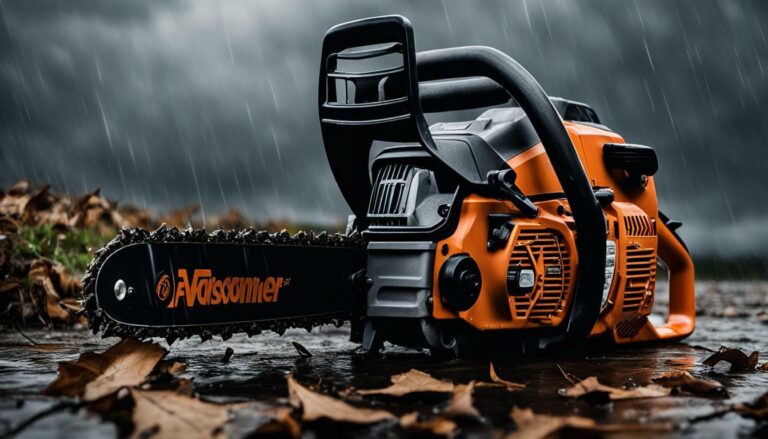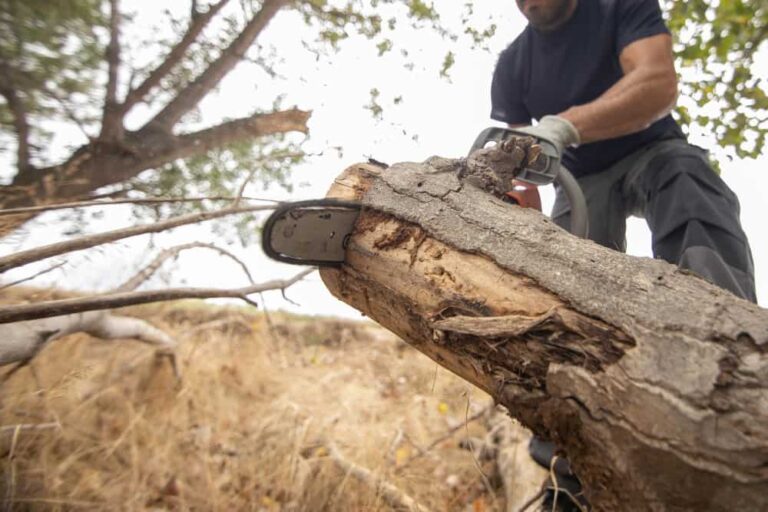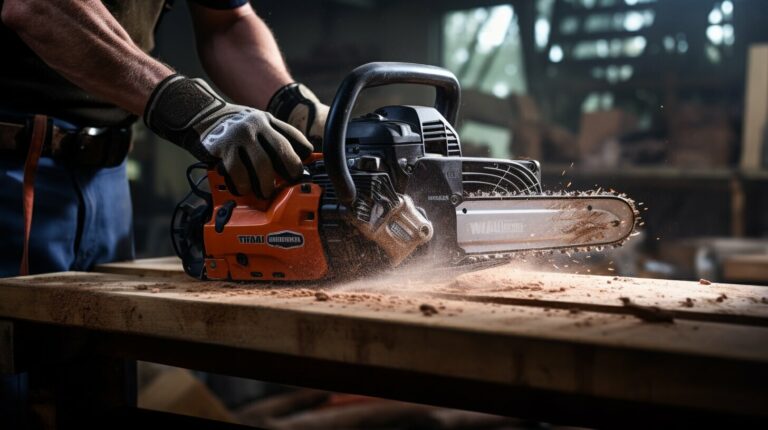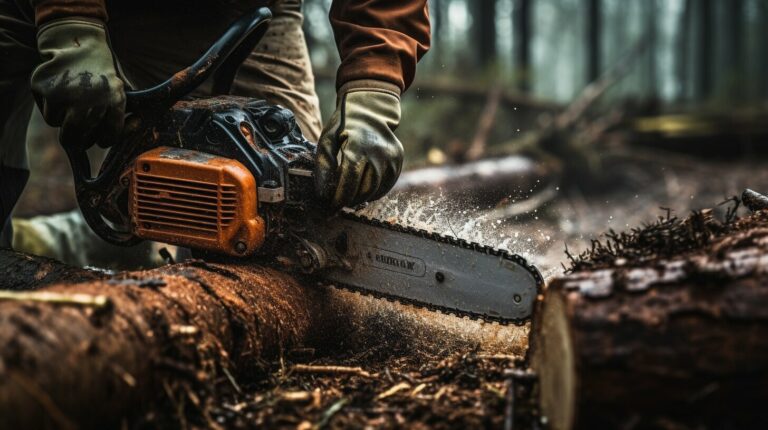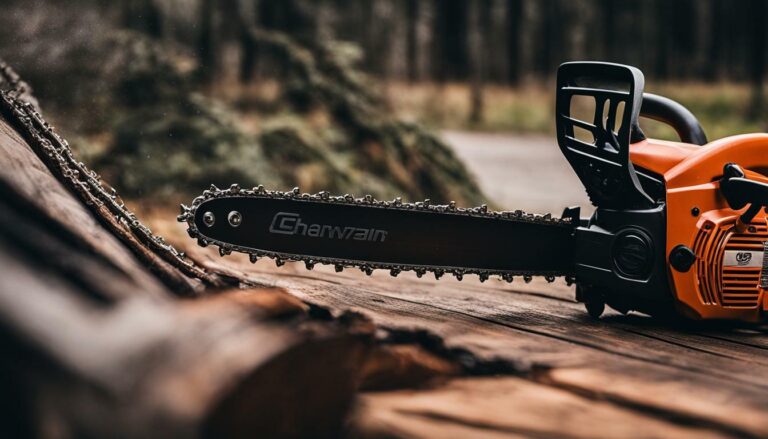Mastering How to Adjust Carburetor on a Chainsaw – Easy Steps!
Adjusting the carburetor on your chainsaw is an essential maintenance task that can improve its overall performance and efficiency. By following these easy steps, you can understand how to adjust carburetor on a chainsaw and ensure your chainsaw runs at its best.
Key Takeaways:
- Start the chainsaw and let it warm up for a few minutes.
- Idle the chainsaw for 30 seconds and then tilt it forward.
- Tighten the Low Speed screw if the chainsaw stalls.
- Loosen the Low Speed screw if the chainsaw “dogs” while accelerating.
- Adjust the High Speed screw if the chainsaw “screams” while being revved.
- Ensure the chain remains stationary while the chainsaw idles.
- Adjust the Idler Screw if the chain rotates while the chainsaw idles.
- Clean the air filter regularly for optimal performance.
- Proper carburetor adjustment leads to better performance and longevity.
By following these steps and maintaining your chainsaw’s carburetor, you’ll have a chainsaw that runs effectively and efficiently.
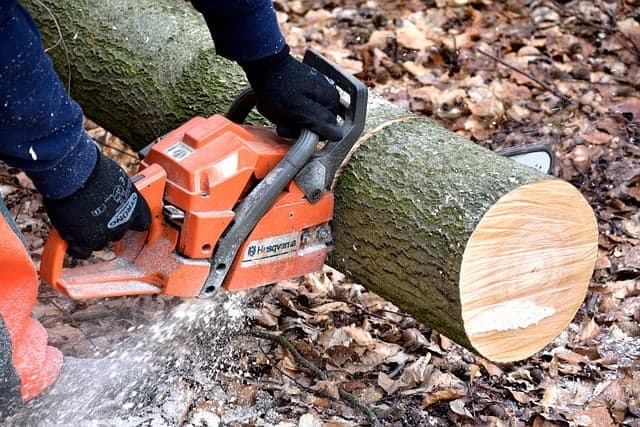
Easy Steps to Adjusting the Chainsaw Carburetor
Adjusting the carburetor on your chainsaw involves a few key steps to ensure the fuel-air mixture is properly calibrated. By following these easy steps, you can optimize the performance of your chainsaw.
- Start the chainsaw and allow it to warm up for a few minutes.
- Let the chainsaw idle for 30 seconds, then pick it up and tilt it forward.
- If the chainsaw continues to run, proceed to the next step. If it stalls, you’ll need to tighten the Low Speed screw.
- Rev the idling chainsaw.
- If the chainsaw accelerates smoothly, move on to the next step. If it “dogs” or sputters, you’ll need to loosen the Low Speed screw.
- Rev the idling chainsaw for about 5 seconds, avoiding prolonged revving.
- If the chainsaw “flutters” while being revved, that’s a good sign. If it “screams,” you must loosen the High Speed screw.
- The carburetor adjustment is complete if the chain remains stationary while the chainsaw idles.
- If the chain rotates while the chainsaw idles, you must adjust the Idler Screw until the rotation stops.
In addition to these steps, cleaning the air filter with hot water and dish soap for paper-type filters is recommended. For wire-type filters, use chainsaw gas to clean them. Taking these extra precautions and proper carburetor adjustment will ensure that your chainsaw runs effectively and efficiently and has improved performance and longevity. This is a simple way how to adjust carburetor on a chainsaw. Remember to always consult your chainsaw’s manual for specific instructions and safety precautions before attempting any adjustments.
Table: Carburetor Adjustment Screws
| Carburetor Screw | Action |
|---|---|
| Low Speed Screw | Tighten to prevent stalling, loosen if the chainsaw sputters |
| High Speed Screw | Loosen if the chainsaw “screams” during revving |
| Idler Screw | Adjust until the chain remains stationary while the chainsaw idles |
Following these steps and maintaining the proper adjustment of your chainsaw’s carburetor will ensure that it operates at its best, allowing you to complete your tasks with ease and efficiency.
Importance of Proper Carburetor Adjustment for Chainsaw Performance
Proper carburetor adjustment is crucial for maximizing the performance and longevity of your chainsaw. A well-tuned carburetor ensures the engine receives the correct air-fuel mixture, allowing it to run smoothly and efficiently. When the carburetor is out of adjustment, the chainsaw may experience sluggish acceleration, stalling, or excessive fuel consumption.
One of the key benefits of properly adjusting the carburetor is improved power output. When the air-fuel mixture is optimized, the engine can deliver maximum power, allowing you to tackle even the toughest cutting tasks easily. Additionally, a well-adjusted carburetor ensures smooth acceleration, preventing the chainsaw from “dogging” or struggling to reach higher speeds.
Another important aspect of carburetor adjustment is fuel efficiency. An improperly adjusted carburetor can lead to excessive fuel consumption, wasting valuable resources and increasing operating costs. By fine-tuning the carburetor settings, you can achieve better fuel economy, reducing refueling frequency and minimizing your environmental impact.
| Chainsaw Carburetor Troubleshooting |
|---|
|
Regular carburetor adjustments also contribute to the longevity of your chainsaw. When the engine runs at its optimal air-fuel mixture, it operates more efficiently, reducing wear and tear on critical components. This can extend the lifespan of your chainsaw, saving you money on repairs or replacements in the long run.
In conclusion, taking the time to adjust the carburetor on your chainsaw is a worthwhile investment. Not only does it enhance performance and fuel efficiency, but it also helps to prolong the lifespan of your valuable tool. Remember to follow the manufacturer’s guidelines and consult a professional if unsure about the adjustment process. By mastering the art of carburetor adjustment, you’ll enjoy smoother operation and get the most out of your chainsaw for years.

Conclusion – Mastering How to Adjust Carburetor on a Chainsaw
So, grab your tools, take your time, and get ready to unleash the full potential of your chainsaw with proper carburetor adjustment.
By following the easy steps outlined in this guide, you can confidently know how to adjust carburetor on a chainsaw, ensuring optimal performance and longevity.
To start, make sure you let your chainsaw warm up for a few minutes. This allows the engine to reach its optimal operating temperature.
Next, let the chainsaw idle for 30 seconds, pick it up, and tilt it forward. If the chainsaw keeps running, you’re off to a good start. If it stalls, tighten the Low-Speed screw to rectify the issue.
Now, rev the idling chainsaw. If it accelerates smoothly, that’s great. But if it “dogs,” you’ll want to loosen the Low Speed screw to achieve the desired performance.
After revving the idling chainsaw for about 5 seconds, listen carefully. The carburetor adjustment is just right if it “flutters” while being revved. However, if it “screams,” you must loosen the High Speed screw to achieve the correct adjustment.
Finally, check if the chain remains stationary while the chainsaw idles. If it does, congratulations! Your carburetor adjustment is complete. But if the chain rotates while the chainsaw idles, no worries. Simply adjust the Idler Screw until the chain stops rotating.
Remember, besides these steps, taking care of your chainsaw’s air filter is important. Clean paper-type filters with hot water and dish soap; use chainsaw gas for wire-type filters. Proper carburetor adjustment and regular maintenance ensure your chainsaw runs effectively and efficiently, leading to better performance and longevity.
FAQ
How do I adjust the carburetor on my chainsaw?
To adjust the carburetor on a chainsaw, follow these easy steps:
What should I do if my chainsaw stalls while idling?
If your chainsaw stalls while idling, tighten the Low Speed screw.
What should I do if my chainsaw “dogs” while accelerating?
If your chainsaw “dogs” while accelerating, loosen the Low Speed screw.
What should I do if my chainsaw “screams” while being revved?
If your chainsaw “screams” while being revved, loosen the High Speed screw.
How do I know if the carburetor adjustment is complete?
If the chain remains stationary while the chainsaw idles, the adjustment is complete. If the chain rotates while idling, adjust the Idler Screw until it stops rotating.
How can I clean the air filter on my chainsaw?
For paper-type filters, clean with hot water and dish soap. For wire-type filters, use chainsaw gas to clean.
Why is proper carburetor adjustment important?
Proper carburetor adjustment ensures your chainsaw runs effectively and efficiently, leading to better performance and longevity.

